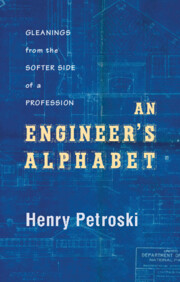V
Published online by Cambridge University Press: 25 October 2011
Summary
Vitruvius. This Roman architect and engineer, whose full name was Marcus Virtuvius Pollio, flourished in the first century B.C. His Ten Books on Architecture, written as a report to the emperor on the state of the art of building design and construction, is believed to be the oldest book on architecture and engineering that has survived. The classic work is often referred to by its author's name rather than by its title.
Early in his First Book, which in modern terminology would be called the opening chapter, Vitruvius lays out the qualities desirable in an engineer:
One wishing to become an engineer or architect must possess not only natural gifts, but also keenness to learn, for neither genius without knowledge, nor knowledge without genius suffices for the complete artist. He must be ready with a pen, skilled in drawing, trained in geometry, not ignorant of optics, acquainted with arithmetic, learned in history, diligent in listening to philosophers, understand music, have some knowledge of medicine and of law, and must have studied the stars and the courses of the heavenly bodies.
See Vitruvius, The Ten Books on Architecture, translated by Morris Hicky Morgan (New York: Dover Publications, 1960); see also “Rereading Vitruvius,” American Scientist, November–December 2010, pp. 457–461.
- Type
- Chapter
- Information
- An Engineer's AlphabetGleanings from the Softer Side of a Profession, pp. 327Publisher: Cambridge University PressPrint publication year: 2011



